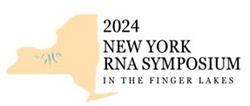News
New Discovery Enables Gene Therapy for Muscular Dystrophies, Other Disorders
Thursday, November 14, 2024
RNA-based technology facilitates effective use for difficult-to-treat, large-gene diseases
Gene therapy can effectively treat various diseases, but for some debilitating conditions like muscular dystrophies there is a big problem: size. The genes that are dysfunctional in muscular dystrophies are often extremely large, and current delivery methods can’t courier such substantial genetic loads into the body. A new technology, dubbed “StitchR,” surmounts this obstacle by delivering two halves of a gene separately; once in a cell, both DNA segments generate messenger RNAs (mRNAs) that join seamlessly together to restore expression of a protein that is missing or inactive in disease.
Published in the journal Science, StitchR—short for “stitch RNA”—restored expression of large therapeutic muscle proteins to normal levels in two different animal models of muscular dystrophy. StitchR enabled expression of the protein Dysferlin, which is lacking in individuals with limb girdle muscular dystrophy type 2B/R2, as well as the protein Dystrophin, which is absent in patients with Duchenne muscular dystrophy.
Duchenne muscular dystrophy is the most common early onset form of muscular dystrophy; many boys become wheelchair bound in their teens and die in their twenties. People with limb girdle muscular dystrophy experience weakness and wasting in the shoulder, hip, and thigh muscles, and often have difficulty standing, moving, and doing everyday tasks.
“Gene therapy is a powerful tool for delivering a healthy gene copy back to a patient’s cells to correct genetic diseases, but the vectors used to deliver this information are small, which has so far precluded their use for treating a whole host of diseases caused by mutations in large genes,” said Douglas M. Anderson, PhD, lead study author and assistant professor of Medicine in the Aab Cardiovascular Research Institute at the University of Rochester School of Medicine and Dentistry (SMD). “Instead of delivering the full gene in a single vector, which isn’t possible, we’ve developed an efficient dual vector system where two halves of a gene are delivered separately but come together to reconstitute the large mRNA in the affected tissues.”
The technology first arose from a serendipitous observation made in the lab several years ago, that when two separate mRNAs were cut by small RNA sequences called ribozymes, they became seamlessly ligated (joined) and translated into full-length protein. The team found that when ribozymes cleave or cut RNA, they leave ends that are recognized by a natural repair pathway.
“Similar to when CRISPR enzymes are used to cut DNA, the CRISPR enzymes are just the scissors, and it’s a cell’s natural repair enzymes that glue the DNA back together,” noted Anderson, who is also a member of the University of Rochester Center for RNA Biology. “We think something similar is happening here, but for RNA. The ribozymes are acting as the scissors and the cell’s natural repair pathways are able to join the two RNAs back together. It’s remarkable that two separate mRNAs are able to find themselves and that the process can be so efficient.”
Read More: New Discovery Enables Gene Therapy for Muscular Dystrophies, Other DisordersThe Albany Prize Awarded to Biochemist Lynne Maquat
Tuesday, October 8, 2024
 One of the largest and most distinguished prizes in medicine in the United States, the 2024 Albany Medical Center Prize in Medicine and Biomedical Research was awarded to Lynne E. Maquat, PhD, director of the Center for RNA Biology at the University of Rochester. Maquat and co-winners Howard Y. Chang, MD, PhD, of Stanford University School of Medicine, and Adrian R. Krainer, PhD, of Cold Spring Harbor Laboratory, were honored for their research on RNA mechanisms that contribute to a wide range of diseases, including spinal muscular atrophy, cancers, and autoimmune disorders. Their collective body of work has laid the foundation for the development of treatments targeting conditions that can’t be corrected with conventional drugs.
One of the largest and most distinguished prizes in medicine in the United States, the 2024 Albany Medical Center Prize in Medicine and Biomedical Research was awarded to Lynne E. Maquat, PhD, director of the Center for RNA Biology at the University of Rochester. Maquat and co-winners Howard Y. Chang, MD, PhD, of Stanford University School of Medicine, and Adrian R. Krainer, PhD, of Cold Spring Harbor Laboratory, were honored for their research on RNA mechanisms that contribute to a wide range of diseases, including spinal muscular atrophy, cancers, and autoimmune disorders. Their collective body of work has laid the foundation for the development of treatments targeting conditions that can’t be corrected with conventional drugs.
The J. Lowell Orbison Endowed Chair and Professor in the Department of Biochemistry and Biophysics at the University of Rochester School of Medicine and Dentistry, Maquat has spent her career deciphering the many roles that RNA plays in sickness and in health and is well known for her discovery of nonsense-mediated mRNA decay or NMD.
One of the major surveillance systems in the body, NMD protects against innate mistakes in gene expression by targeting and eliminating deleterious mRNAs that could lead to the production of incomplete and potentially toxic proteins that can cause disease. Thanks to more than 40 years of research by Maquat and others, scientists are beginning to put the mechanistic findings related to NMD to use to design new therapies.
“Lynne’s scientific career is nothing short of outstanding and her contributions have brought RNA biology to the leading edge of medicine,” said David C. Linehan, MD, CEO of the University of Rochester Medical Center and dean of the University of Rochester School of Medicine and Dentistry. “This award acknowledges her exceptional ability to discover, innovate and push the limits of scientific understanding, and we’re extremely proud that her efforts are being acknowledged with this major honor."
The Albany Prize in Medicine and Biomedical Research has been awarded annually since 2001 to recognize extraordinary contributions to improving health while promoting novel biomedical research. Recipients are nominated by their peers and ten winners have gone on to win the Nobel Prize. Past awardees, including influential figures like former director of the National Institutes of Health Anthony Fauci, MD, and CRISPR pioneers Jennifer Doudna, PhD, and Emmanuelle Charpentier, PhD, have made major contributions to health and medicine that have had national and international impact.
“Lynne’s groundbreaking research on nonsense-mediated mRNA decay serves as the cornerstone of an ever-expanding field dedicated to mRNA monitoring and regulation—an area that is rapidly changing the way we think about and develop new therapies," said Steve Dewhurst, PhD, vice president for Research at the University of Rochester. “The success of the COVID-19 vaccines confirmed that mRNA-based technologies can be absolutely transformative, and Lynne’s work is indispensable for scientists and companies developing RNA based therapeutics.”
Maquat also holds appointments in Pediatrics and Oncology and is a member of the Wilmot Cancer Institute at the University of Rochester Medical Center. She is the founding director of the Graduate Women in Science program at the University of Rochester.
Read More: The Albany Prize Awarded to Biochemist Lynne MaquatLynne Maquat Receives 2024 Dr. Paul Janssen Award
Tuesday, September 24, 2024
Lynne E. Maquat, Ph.D., a mechanistic biochemist and director of the University of Rochester Center for RNA Biology, is the winner of 2024 Dr. Paul Janssen Award for Biomedical Research. Honored for her fundamental discoveries about RNA decay in the context of human diseases, she shares the award with Alexander Varshavsky, Ph.D., of the California Institute of Technology, who is honored for his research on regulated degradation of proteins.
Established by Johnson & Johnson in 2004, the award is a tribute to Dr. Paul Janssen, an accomplished and passionate researcher who helped save millions of lives through his contribution to the discovery and development of more than 80 medicines. Since its inception, the award has recognized 24 exceptional scientists, eight of whom have gone on to win the Nobel Prize.
Maquat discovered a cellular quality control mechanism known as nonsense-mediated mRNA decay or NMD. One of the major surveillance systems in the body, NMD protects against mistakes in gene expression by targeting and eliminating deleterious mRNAs that could lead to the production of incomplete and potentially toxic proteins. NMD plays a role in many disorders, including inherited diseases like cystic fibrosis and different types of cancer.
Maquat and Varshavsky were chosen by an independent selection committee of the world’s most renowned scientists.
Read More: Lynne Maquat Receives 2024 Dr. Paul Janssen AwardCelebrating Decades of Advances in Myotonic Dystrophy Research
Tuesday, September 17, 2024
 On September 15, Strong Memorial Hospital lit up blue to commemorate Myotonic Dystrophy Awareness Day and the significant scientific progress achieved in Rochester and beyond over the past 30 years. These advancements have brought researchers closer than ever to developing treatments for this debilitating disease.
On September 15, Strong Memorial Hospital lit up blue to commemorate Myotonic Dystrophy Awareness Day and the significant scientific progress achieved in Rochester and beyond over the past 30 years. These advancements have brought researchers closer than ever to developing treatments for this debilitating disease.
The recent renewal of a joint University of Rochester Medical Center (URMC) and University of Florida Paul D. Wellstone Muscular Dystrophy Cooperative Research Center will further strengthen these efforts. URMC, one of the original Wellstone Centers established in 2003, has been continuously funded by the National Institutes of Health to study myotonic dystrophy and facioscapulohumeral muscular dystrophy.
"The Wellstone Center program has been instrumental in our understanding of the molecular and physiological processes underlying the most common form of adult-onset muscular dystrophy, myotonic dystrophy," said Charles Thornton, MD, co-director of the Wellstone Center. "This knowledge has enabled us to develop promising treatments for this disease. The center's organization, which includes the National Registry for myotonic dystrophy, is built upon strong and longstanding collaborations between basic researchers at the University of Florida and clinical experts at the University of Rochester."
The new funding will support research in Rochester and Florida aimed at accelerating clinical research for novel gene therapies in myotonic dystrophy, type one (DM1), and prepare to translate these therapies into clinical practice, if approved. It is anticipated that modified versions of these therapies could also be effective for myotonic dystrophy, type two (DM2). To expedite clinical trials for DM2, researchers will expand their basic and clinical research efforts in this area.
Researchers at the University of Rochester Medical Center have been at the forefront of these advancements. Over three decades ago, Robert (Berch) Griggs, MD, Richard Moxley, MD, and Thornton were the first to describe myotonic dystrophy type 2. In collaboration with patients and families, the national registry has been an invaluable resource for understanding the natural history of the disease and conducting clinical research.
Read More: Celebrating Decades of Advances in Myotonic Dystrophy ResearchCall for Abstracts! UR & UAlbany’s 2024 New York RNA Symposium in the Finger Lakes
Thursday, May 30, 2024
 October 14-15, 2024
October 14-15, 2024
Hotel Canandaigua, a Tapestry by Hilton
205 Lakeshore Dr.
Canandaigua, NY 14424
We are pleased to announce our upcoming 2024 New York Symposium in the Finger Lakes, co-organized and hosted by the University of Rochester Center for RNA Biology and The RNA Institute at the University at Albany. This year's meeting will be held at the Hotel Canandaigua on October 14-15th, 2024. The symposium will feature a rich exchange of information leveraging the innovative and interdisciplinary research ongoing within the regional RNA community (including primarily New England and mid-Atlantic states).
The symposium will feature keynote talks, invited faculty talks, and trainee presentations (including posters, 15-minute talks, and 1-min lightning talks selected from abstract submissions). This year’s event is trainee-focused, with a networking lunch, a trainee gathering the day before the formal meeting starts (to be held on Oct 13th), poster and talk awards, and opportunities for trainees to interact with senior scientists and industry partners.
Keynote Speakers:
- Eckhard Jankowsky, PhD, VP of RNA Science, Moderna
- Karla Neugebauer, PhD, Director, Yale Center for RNA Science & Medicine
- Sally Temple, PhD, Co-Founder and Scientific Director, Neural Stem Cell Institute
- Blanton Tolbert, PhD, (UR Alumnus) VP of Science Leadership and Culture, HHMI; Professor of Biochemistry and Biophysics, University of Pennsylvania
Faculty Speakers:
- Mitchell O’Connell, PhD, Assistant Professor, Department of Biochemistry & Biophysics; Member, Center for RNA Biology; University of Rochester Medical Center
- Kathleen McDonough, PhD, Professor, Department of Biomedical Sciences, The RNA Institute, University at Albany
Early-bird registration, abstract submission, and hotel deadline: September 13th
- Registration costs include meals and attendance for both days.
- Trainees, plan to arrive Sun, Oct 13th in time for an early afternoon event (TBD).
- Abstracts should be submitted separately using this template; see Abstracts for more info
- Abstract submission closes after September 13, 2024
- Hotel Accommodations must be booked separately from registration.
- Click here for our event hotel booking links & rates.
- UR trainees are encouraged to double-up at the 2-Queen room rate at the Hotel Canandaigua.
Visit our Symposium Page Register Today
If you have any questions, please reach out to FingerLakesRNA@urmc.rochester.edu.
Rochester and Albany launch new Center of Excellence in RNA research
Friday, May 10, 2024
The joint venture between the University of Rochester and University at Albany will drive economic development through research and training.
The University of Rochester and University at Albany are partnering on a new Center of Excellence in RNA Research and Therapeutics focused on developing RNA-based therapies and training the next generation of New York’s biotechnology workforce.
Assemblymember Harry Bronson (D-Rochester) led the charge to secure funds in the 2024–25 New York State Enacted Budget to establish the new Center of Excellence, known as CERRT, which will initially receive $250,000.
Home to renowned scientists with decades of experience and millions of dollars in external funding for RNA-based research, the institutions will work together to promote economic growth through continued scientific discovery and partnership with industry.
Press Releases, Social Media Links, and Photos
13 WHAM - University of Rochester, UAlbany partner to form RNA-based research center
WROC - U of R to collaborate on new RNA-based research center with University of Albany
Event Photos
UR News Center
URMC Newsroom
SMD LinkedIn
SMD Instagram
SMD X
Mitch O’Connell: A Serendipitous Path to CRISPR
Monday, February 26, 2024
The Aussie native originally thought of becoming an astrophysicist. Now, he’s exploring the intricate universe of protein structures.
Read More: Mitch O’Connell: A Serendipitous Path to CRISPR